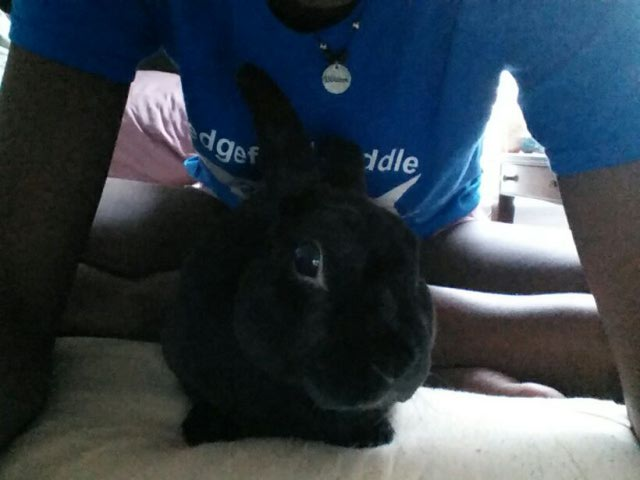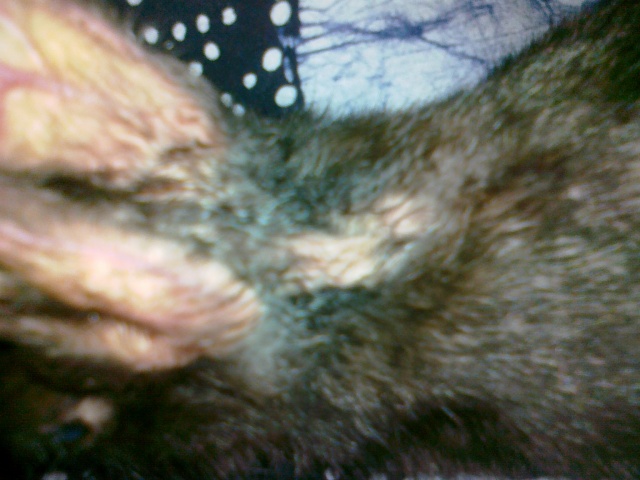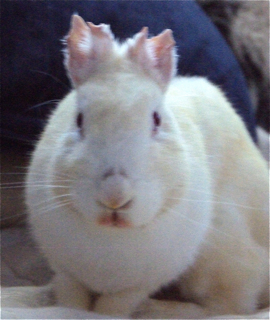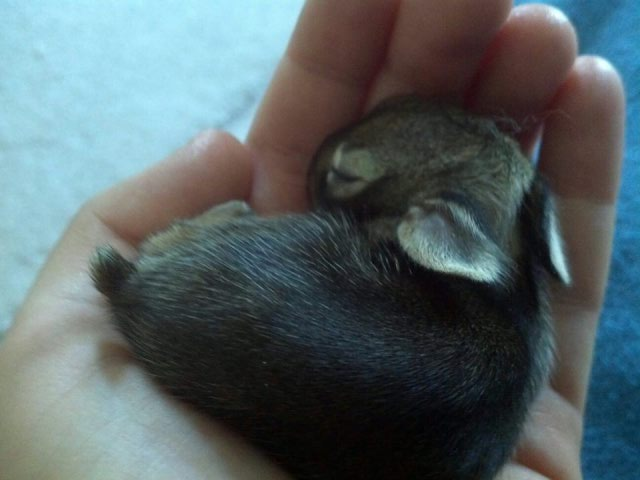QuestionQUESTION: What is classed as a normal upper limit for intraocular pressure in rabbits and at what point would medication be required. This question has come up on a rabbit forum I belong to.
Many thanks,
Vanessa Browne
ANSWER: Dear Vanessa,
Normal mammalian IOP is usually considered to be between 10 mmHg and 20 mmHg. But our veterinary ophthalmologist doesn't like to see IOP higher than about 15 in a rabbit, as they are particularly susceptible to glaucoma. She considers a rabbit on the high end of the IOP spectrum to be a candidate for anti-glaucoma treatment, just to be on the safe side.
Hope that helps.
Dana
---------- FOLLOW-UP ----------
QUESTION: Dear Dana,
Thanks so much for your reply.
The rabbit in question has had the IOP's checked (by an optician/oculist?) and the readings are 22 R+L. Other bunnies checked for comparison were reading 1O. As an optician myself I would have assumed the 22 was at the top end of normal for a rabbit, as in humans, but it would seem this rabbit is in need of treatment. We have not been able to discover an upper normal limit for bunnies here. Which medn is first choice in rabbits?
Thanking you again,
Vanessa Browne
ANSWER: Dear Vanessa,
If our ophthalmologist had a bunny with IOP of 22, the bun would be on meds in a heartbeat. Damage to the retina and lens can happen just too quickly to let things get any worse.
As you probably know, IOP can increase for several reasons, but essentially either the intraocular fluid is not leaving quickly enough to make room for incoming fluid. There are medications that work either way: to slow the inflow of fluid, and to increase the outflow. In some cases, the ophthalmologist will try one first, and if it doesn't work to reduce the IOP, then switch to the other.
For Kyla, our glaucoma bun, Dr. Karpinski first prescribed timolol drops. These had little effect. So she switched Kyla to the more expensive Trusopt (dorzolomide hydrochloride), which worked. We now have her on really expensive Cosopt (a drop combining Trusopt and Timolol), and it seems to be keeping her IOP steady and in the normal range.
The vet warned us that sometimes the drops can stop working, and that other meds are available when that happens, but they have more side effects and cause some discomfort--so we should avoid those as long as possible. So far, no need for more drastic measures. The Cosopt is working fine. (You can use Trusopt and timolol drops together, and that's a bit cheaper than Cosopt.)
I hope that helps you get your bunny's eyes back in good condition so that no damage occurs, and she'll keep her sight for many years to come.
Dana
---------- FOLLOW-UP ----------
QUESTION: Thank you again Dana for your rapid reply.
The rabbit in question (not mine but at a rescue/sanctuary) has been started on Trusopt. The owner posted a picture earlier and the corneas do look to be oedematous. I so hope the rabbit has ben caught in time. I will pass your info about the medication to the owner. Thank you for being so helpful,
Vanessa Browne.
AnswerDear Vanessa,
The first sign of glaucoma is sometimes very subtle, as you describe. But that means you've probably caught it early. The medications, if they do work, usually work quite quickly to reduce the IOP, but the eye may never look quite the same again.
Dr. Karpinski described it this way: The eye with high IOP is a bit like a balloon that has been inflated. Once the medication reduces the inflation, the tissues have still been stretched, and it's easy for the eye to increase in size again, once it's already been stretched. So it's important to check the IOP periodically to be sure the meds are doing their job, and take action accordingly if the IOP goes up again.
I hope she'll be fine for a long time! Thank you for your kindness in helping your friend and her bunny. :)
Dana

 Buzz
Question
Buzz
I spank my bunny but he got afraid
Buzz
Question
Buzz
I spank my bunny but he got afraid
 abscess on bunnys leg/ankle
Question
Ruby
I m having troubles with my bunny
abscess on bunnys leg/ankle
Question
Ruby
I m having troubles with my bunny
 hair loss at neck region of a rabbit
Questionhair loss at neck
QUESTION: hi
i have a
hair loss at neck region of a rabbit
Questionhair loss at neck
QUESTION: hi
i have a
 TMJ Osteomyelitis (e. cuniculi) or just TMJ & options
QuestionEarless Glenna
QUESTION: Hi Dana,
My re
TMJ Osteomyelitis (e. cuniculi) or just TMJ & options
QuestionEarless Glenna
QUESTION: Hi Dana,
My re
 Wild baby rabbit; questions and concerns
Question
Tiny
Hello Dana, yesterday I was walkin
Wild baby rabbit; questions and concerns
Question
Tiny
Hello Dana, yesterday I was walkin